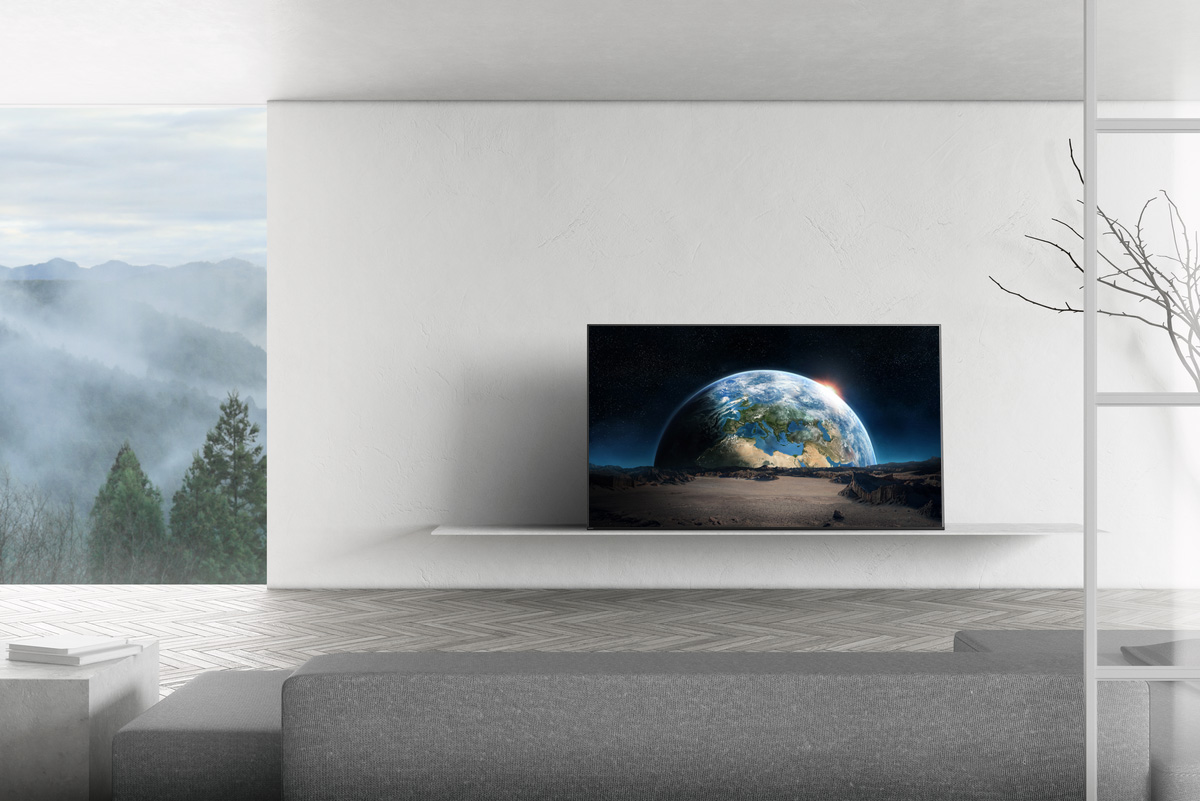

But what if it didn’t have to be this way? What if we could have TVs engineered like smooth sheets of glass that didn’t sacrifice sound along the way? If it sounds too good to be true … well, it’s not anymore. The solution Sony came up with is so simple it’s going to change the way we experience sound on TV entirely.
Remember that large, flat surface, the one that’s necessary for speakers to create rich sound? You know, the one that’s minimized to make room for that other giant flat surface: the screen? See where we’re going here? Sony BRAVIA OLED TVs have done something remarkably simple in theory, yet complex in design. They turned that big, beautiful sheet of glass (the screen) into the speakers.
The gist of what Sony calls Acoustic Surface technology is simple. Behind the OLED panel are four actuators which cause the screen to vibrate imperceptibly, emitting sound waves. The subwoofer, meanwhile, is built into the easel stand hidden behind the display, rounding out bass and deep tones.
However, because the speakers on Sony BRAVIA OLED TVs are now working with a surface area greater than any other modern television, they can get a little more creative. By pairing the Acoustic Surface technology with an algorithm designed to interpret what’s on the screen, Sony BRAVIA OLED TVs can project sound directly from its visual source. Voices are emitted directly from actors’ mouths, a conversation takes place from multiple sources, a speeding car literally zips across your screen. Those crickets in the background can chirp from a different area of the speaker than the foreground noise, creating a realistic sensation of depth and texture.
Because OLED screens (as opposed to LCD panels) are constructed with fewer layers, Acoustic Surface technology is currently only possible on OLED displays, and only available on Sony BRAVIA OLED TV. OLEDs allowed them to reimagine the basic structure of speakers themselves, and challenge the primacy of the display. Not only do Sony BRAVIA OLED TVs possess rich, full speakers, but they’re also the most technologically advanced, adding a layer of tactility to robust sound. It all makes for an immersive viewing experience with picture and sound in perfect harmony.